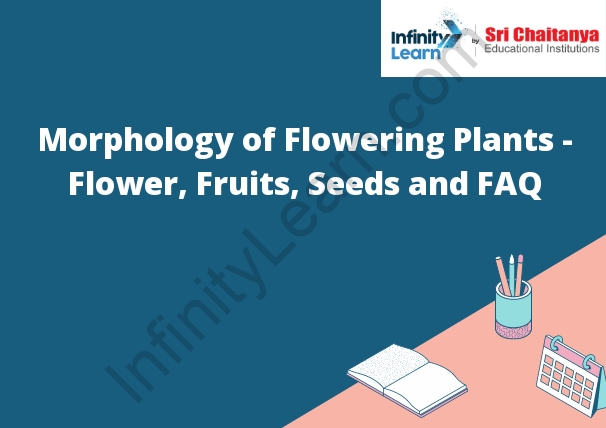Table of Contents
Introduction to Morphology of Flowering Plants
Morphology of Flowering Plants is the study of the form and structure of plants. The field of morphology of flowering plants is divided into two main areas: the external morphology of plants and the internal morphology of plants.
External morphology of plants is the study of the form and structure of the plant’s leaves, stems, flowers, and fruits. Internal morphology of plants is the study of the form and structure of the plant’s tissues and organs.
One of the main goals of morphology of flowering plants is to understand how the form and structure of plants helps them to carry out their life activities.

Know About Morphology of Flowering Plants
The morphology of flowering plants includes the external features of the plant and the internal features of the plant’s reproductive system. The external features of a flowering plant include the stem, leaves, flowers, and fruit. The internal features of a flowering plant include the root system, the stem system, and the reproductive system.
The stem of a flowering plant is the main structural support of the plant. The stem is made up of two parts, the root system and the stem system. The root system is the part of the plant that anchors the plant in the soil and absorbs water and nutrients from the soil. The stem system is the part of the plant that carries water and nutrients from the roots to the leaves and flowers.
The leaves of a flowering plant are the primary organ for photosynthesis. The leaves are made up of two parts, the blade and the petiole. The blade is the flat part of the leaf that the sunlight hits. The petiole is the stalk that attaches the blade to the stem.
The flowers of a flowering plant are the reproductive organ of the plant. The flowers are made up of three parts, the sepals, the petals, and the stamens. The sepals are the green parts of the flower that protect the petals. The petals are the colorful parts of the flower that attract pollinators. The stamens are the male parts of the flower that produce pollen.
Detailed Morphology of Flowering Plants
Flowering plants are distinguished by their reproductive organs, which are typically located at the tips of the stems. These reproductive organs, the flowers, are composed of sepals, petals, stamens, and carpels.
The sepals are the green, leaf-like structures that protect the flower bud before it blooms. The petals are the colorful, often showy, parts of the flower that attract pollinators. The stamens are the male reproductive organs, and the carpels are the female reproductive organs.
When the flower is pollinated, the stamens release their pollen, which is then transferred to the carpels. The carpels then produce fruit, which contains the seeds that will grow into new plants..
Flowers
The flowers of the ash tree are small and inconspicuous. They are greenish-white in color and are borne in small clusters.
Flowers’ Functions
There are many functions of flowers. Flowers are used for reproduction, to attract pollinators, and to provide food for animals.
Fruits
The fruits in the game are:
- Banana
- Apple
- Pear
- Watermelon
- Cantaloupe
- Honeydew
- Grape
- Strawberry
- Blueberry
- Raspberry
- Blackberry
Seeds
- Butter
- Garlic
- Onion
- Green pepper
- Salt
- Black pepper
- Celery seed
- Parsley
- Tomato sauce
- Ground beef
- Lasagna noodles
- Shredded cheese
Flowering Plants or Angiosperms
- Angiosperms are flowering plants that produce seeds in a protective fruit or ovary. The ovary is the enlarged basal part of the pistil, the female organ of a flower.
- The flowers of angiosperms are typically arranged in fours or fives, with the petals and sepals (the outermost parts of the flower) overlapping. The stamens, which produce pollen, are usually located on the petals.
- The fruits of angiosperms are often brightly colored and attract animals, which disperse the seeds in their droppings.
- Angiosperms are the most diverse group of plants on Earth, with over 260,000 different species. They are found in all environments, from the Arctic tundra to the rainforest floor.









